| Lubenham All Saints Church is a delightfully 'unrestored' building with a very complex history.
It is constructed of ironstone dressed with limestone, and consists of chancel, clerestoried nave, north chapel, north and south aisles, south porch and low embattled west tower which may possibly have once carried a spire.
The oldest features are two circular piers in the north arcade of the nave, dating from the 12th century.
There are 5 bells, the tenor of 1624 and four others all cast in 1724. All were re-hung on a new frwmework in 1922.
The parish registers date from 1559.
The north chapel or vestry was used for many years as a parish school during the 18th century.
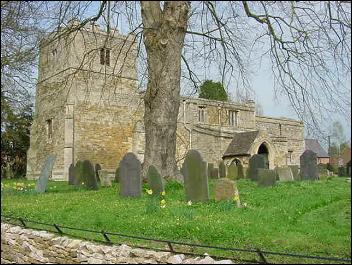
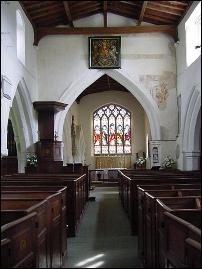 |
The
inside of All Saint's church showing the oak box pews
(installed about 1810 replacing medieval benches), the
tall pulpit and alter table.
The present alter with its massive turned and carved
legs is of the early 17th century, and originally came
from the Old Hall. It replaced a small communion table,
now in the north chapel, which in turn had replaced
a medieval stone alter.
|
 |
Also
from the Old Hall is the sanctuary chair. Tradition
has it that Charles I used this chair when he stayed
at the Hall in 1645 on the eve of the fateful Battle
of Naseby. |
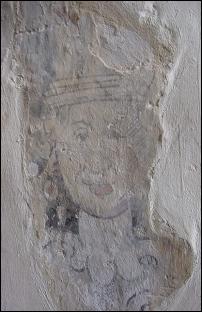 |
The
history of the church is an ancient one, and there is
evidence of a very different interior to the one we
see today. If we travelled back to 1500 there would
have been brightly coloured paintings on the walls of
the church, designed not only to be appealing but to
be instructive also. Alas, all that remains are two
Trinity figures to the right of the chancel arch and
also a wonderful medieval representation of Christ,
discovered during restoration work and now hidden behind
a panel in the pulpit. These paintings were gone by
1625, painted over with whitewash, sadly considered
by many theologians at the Reformation to be merely
objects that created superstition. |
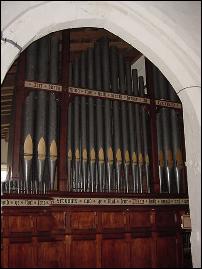 |
The
organ installed in the North Chapel in 1872 replaced
the need for a musician's gallery at the rear of the
nave. The gallery, since the early 17th century, would
have held an orchestra of musicians with its various
instruments ranging from fiddles to vamping horns. The
orchestra would have provided music not only for church
services but also for the village festivities and dances.
Prior to the musicians' gallery there had been a 'rood-loft'
, a platform supported near the ceiling by a large beam.
In the north aisle are remains of steps and a doorway,
high above ground, which led to this loft. |
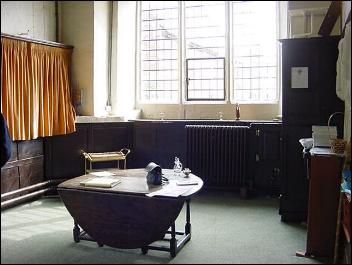 The North Chapel (Vestry) The North Chapel (Vestry) |